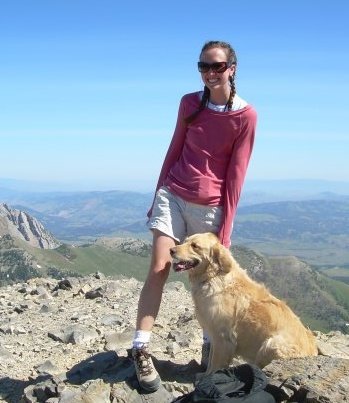 Angela Jamison is a native Montanan and she grew up in beautiful Bozeman. I'm the mother of two girls and write a blog about our life here and taking in the simple pleasures of family and food.
Angela Jamison is a native Montanan and she grew up in beautiful Bozeman. I'm the mother of two girls and write a blog about our life here and taking in the simple pleasures of family and food.
One of my favorite things about a Montana summer is camping. Nothing fancy, just good old fashion, sleeping in a tent camping. I think how people define camping can vary drastically. Some consider loading up their fifth wheel with all the luxuries of home and traveling to a designated campground with restrooms and full hook-ups to be camping. On the other end are those who put all they need in a backpack and hike miles to a remote spot, put up a tent, make a fire ring and eat the small amount of dehydrated food they could fit in the pack. I fall somewhere comfortably in the middle of these two extremes. Going far away from campgrounds to truly be out in the mountains, yet be able to bring a few more necessities and in this case I do consider beer a necessity…it is camping after all. Because we try to get out as many weekends as possible during our short summer months, we have camping down to a science around here. Easy to pack up, set up and get around to the business of camping. And because I do believe camping to be so amazing and good for the soul, I think if everyone did it people could save a lot of money on therapy. So, here are some tips on how to make it good.
One of the best things about camping is the simplicity of it, which is why this is important to keep in my when getting ready to go camping. It’s good to be prepared, but the less you have the easier it is. We have found that everything we need for a night of camping can fit in our car. The obvious things…tent, sleeping bags, camp chairs, food and water. I keep one small box always packed with other camping essentials…matches, headlamps, first aid kit, plates, utensils and of course a deck of cards for camp fire games. One skillet for cooking in and a marshmallow roasting stick and we are good to go. We barely pack any clothes, just warm things to layer up on as the nights cool down in the mountains. Done with packing.
Cooking in the mountains stays simple as well because we only bring what can be cooked over the fire. This usually means everything wrapped in tinfoil and thrown on the fire. I get it all ready before we go so all of the chopping is out of the way and you can relax drinking the aforementioned beer watching the fire as your dinner cooks. Ahhhh. I have found the easiest thing is fish seasoned with herbs and olive oil in one thing of tinfoil and diced potatoes and veggies in the other. Everything tastes bester when cooked over the fire and when s’mores are on the menu for dessert it is all good. Speaking of s’mores, no camp trip is complete without this family favorite.
Days camping are spent exploring the area around you. Hiking, walking along the stream, taking in the beauty that you have found by traveling deep in the mountains. There are no distractions of technology because if you found a good spot it means there is no cell reception. It is quiet. The only sounds are the wilderness around you and if you have a family it’s happy children using their imaginations to fuel their play. Everything slows down as you take in the fresh air and relax. This is why it is good for the soul. You can breath a little deeper. Your thoughts slow down. There is no to-do list. As the sun goes down, the glow of the campfire and the stars above bring even more peace. It is truly captivating. Falling asleep and waking up to the birds outside your tent and if you are lucky enough maybe a rambling creek nearby. Waking up slow as nature slowly wakes up around you.
Yes, I do believe camping is my favorite summer activity. I feel forever grateful to live in a place where getting to the mountains or rivers for camping is easy. If only we had more months out of the year to take in this hobby. I suppose there are plenty of people who enjoy winter camping in a 30-degree below sleeping bag. That’s just crazy…I think we’ll stick with soaking up the months we get and then patiently wait for the next camping season to begin.